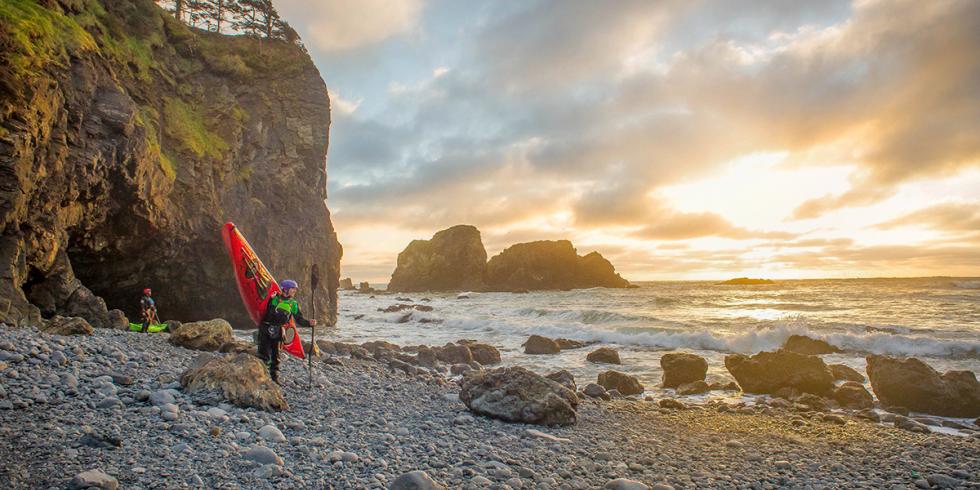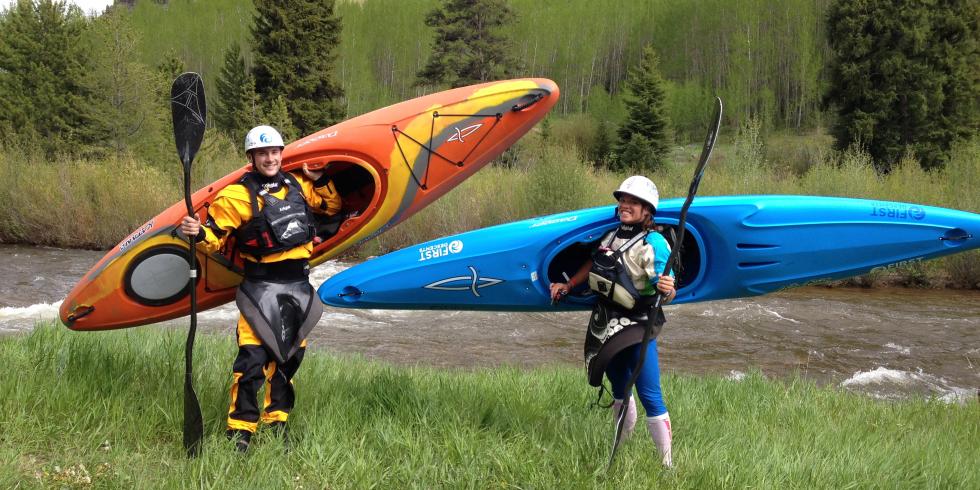By Regina Nicolardi
Like many paddlers today, I am just as often scouting a rapid for photo opportunities as I am to run it. Capturing a moment on the river can provide that same feeling of accomplishment as when you stick a line. But it can also feel equally as frustrating when things unravel, and you find yourself with a memory card of images that just don't do the run justice. There are really no secrets to getting a great shot – just a general understanding of your camera and taking the time to observe a few key elements. When approaching a rapid for a photo, there are two major factors I always keep in mind. Where is my light? And where is my line?
Know the intended line your paddler will be passing through from the top to the bottom of the rapid, and how that works with where you decide to position yourself. Take time to think about the outcome you will achieve from your chosen shooting place. Will the paddler be charging at you? Will they be paddling away from you? How will the boat be angled in relation to your position? If the paddler puts the boat on edge are you going to catch the bottom of the hull or the paddler's epic ear dip? Experiment with different shooting elevations to see how standing on a tall rock produces a different aspect than down near river level. Frame the shot so the paddler passes through with a minimum amount of panning and burst. Too much of this and your camera may lag – missing the best shots because it is busy writing the files or loses focus.

Here is the same rapid on the White Salmon with two different perspectives on Dagger athlete Sam Grafton.
Next, think about how the light is working in relation to your line. Lighting is tricky to master and every situation is different, but here are a couple basics to help you get started. If you are shooting in bright sun, it’s best to have the sun at your back allowing for your subject to be directly lit. A lot of times whitewater is shot in the middle of the day when the sun is over head. This works, but it presents a lot of strong shadows and bright spots. If this is the case try tightening the shot up a little bit to give your camera a more specific area to meter. Also don’t be afraid to play with the sun, by shooting into it you can create silhouettes and solar flares. If it’s a cloudy day, or you’re deep in a gorge, light is softer and more even to work with — but because there is less it raises the potential of shooting a blurry photo. This is where learning your way around the camera’s manual mode to maximize light will make a difference.

This shot was taken in bright over head sun - I zoomed in to minimize the amount of bright spots and shadows, making the light appear more even. Dagger athlete Adriene Levknecht looks strong and although the whole drop isn’t in the frame, it eludes to something stout.
Remember, great whitewater photos don’t have to happen during the crux of the biggest drops out there. The stronger the paddler looks, the stronger the photo. Sometimes the best moments are even in the run-out, or during a portage. When deciding which photos to share, remember not every shot is a keeper. Choose your best work to present, otherwise it will be lost somewhere in a brodak album of hundreds. Have fun and be creative


Regina Nicolardi is a professional photographer, who just wrapped a five-day shoot with Dagger in the Pacific Northwest. You can see more of her work at www.reginanicolardi.com




